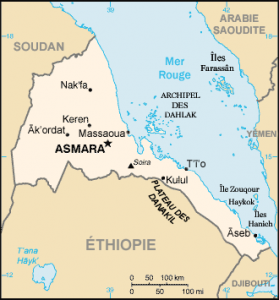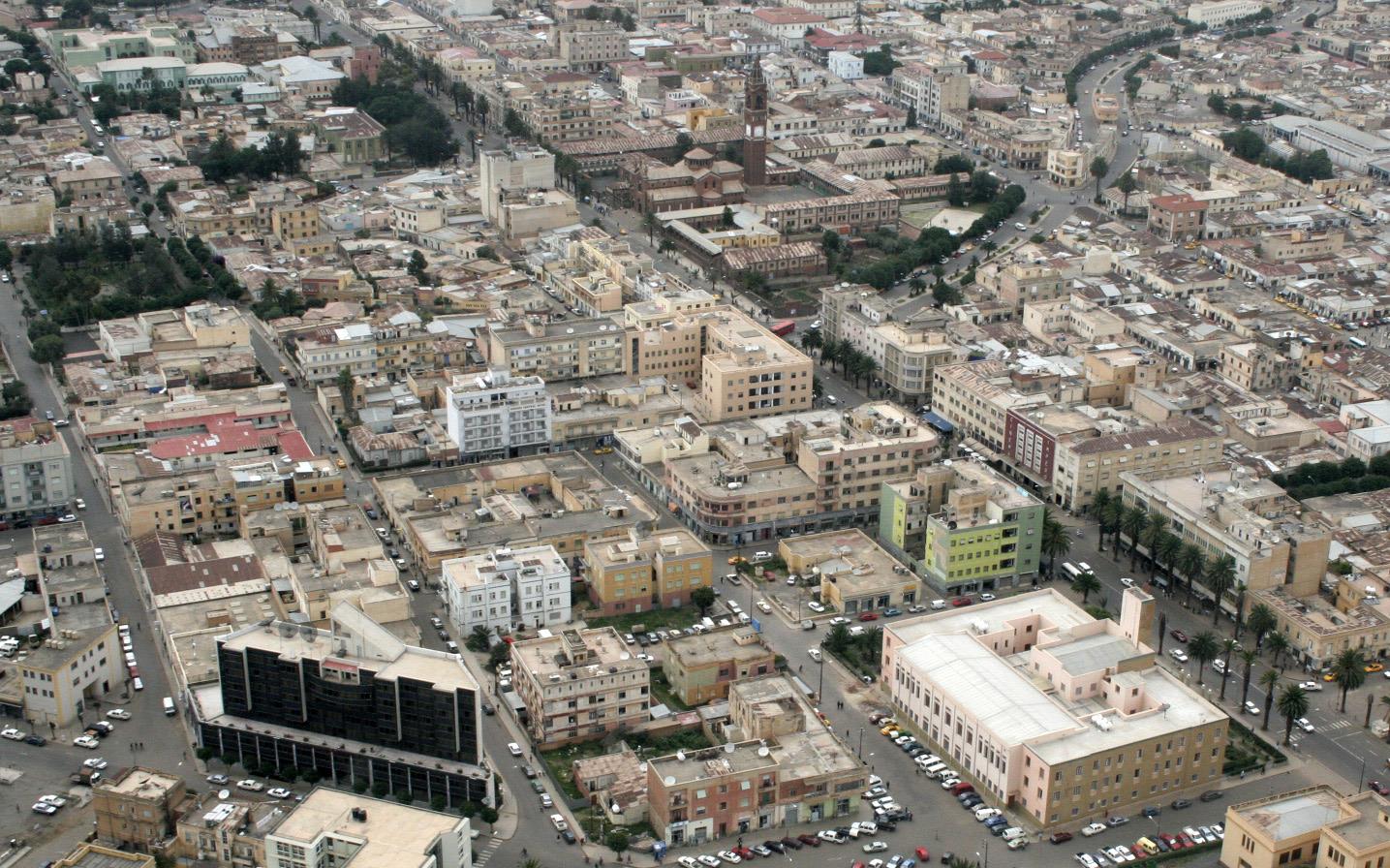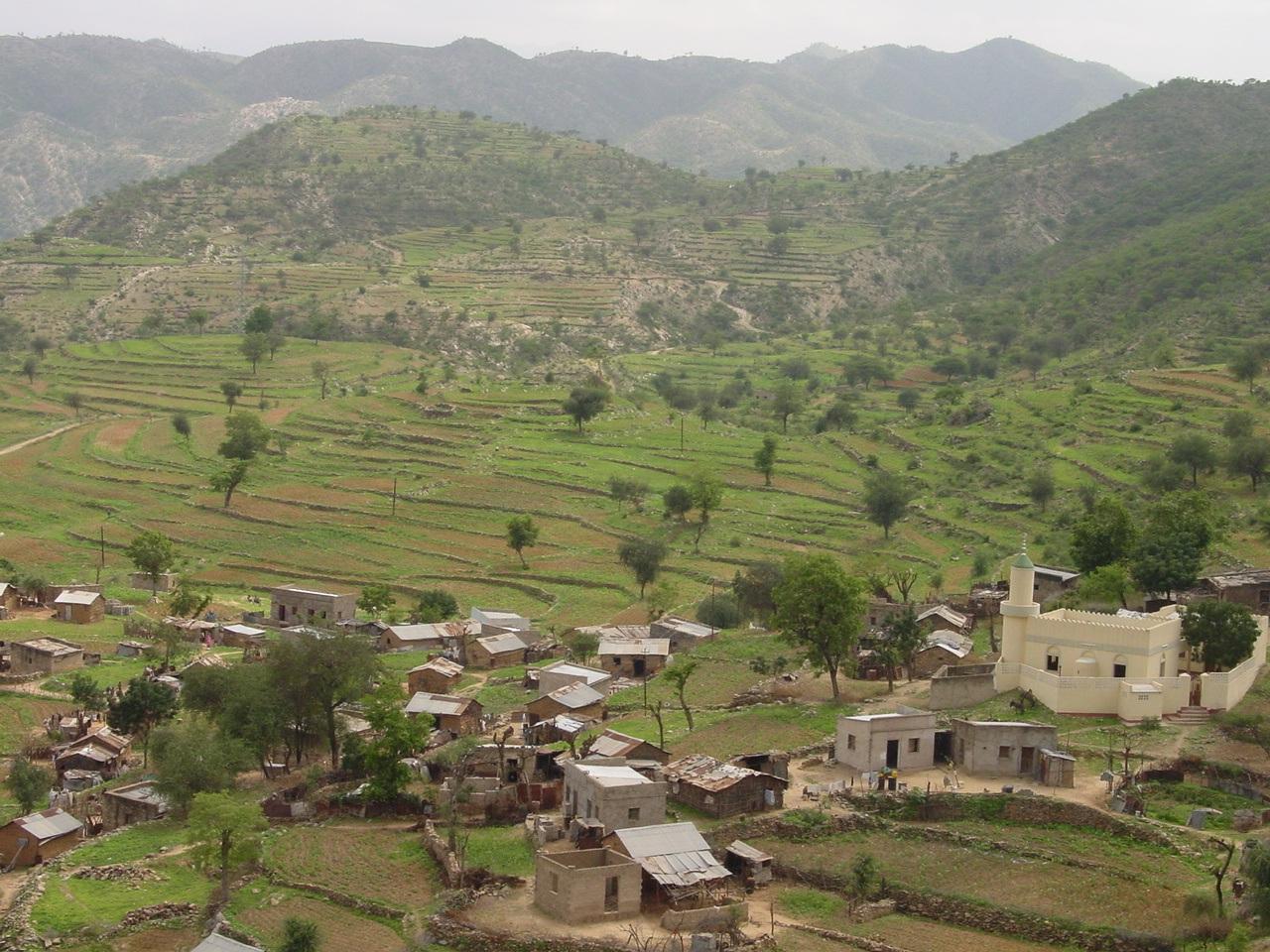
| Official name | State of Eritrea |
| Name in local language | ሃገረ ኤርትራ Hagere Ertra (ti) ; دولة إرتريا Dawlat Iritriya (ar) |
| Continent | Africa |
| Subcontinent | East Africa |
| Population (ranking: 123e) | 5,187,948 inhabitants (2018) |
| Population growth | 2.35 % / year |
| Area | 121,320 km² |
| Density | 42.76 inhabitants / km² |
| GDP (ranking: 160e) | 6.856 billions $USD (2018) |
| GDP/capita (ranking) | 988 $USD (2018) |
| GDP growth | 5.00 % / year (2018) |
| Life expectancy (ranking) | 65.90 years (2018) |
| Birth rate | 29.60 ‰ (2017) |
| Fertility rate | 3.99 children / woman (2017) |
| Death rate (ranking) | 7.20 ‰ (2017) |
| Infant mortality rate (ranking) | 45.00 ‰ (2017) |
| Literacy rate | 73.77 % (2015) |
| Official languages | Tigrinya, Arabic, English |
| Currency | Nakfa (ERN) |
| HDI (ranking: 221e) | 0.434 / 1 (2018) |
| EPI (ranking) | 39.34 (2018) |
| Government | Unitary one-party presidential republic. Dictatorial |
| Head of State | President Isaias Afwerki |
| National Day | 24 May (independence of 1993) |
| ISO Codes | ER, ERI |
| Demonym | Eritrean |
| Tourists (ranking) | 142,000 people (2016) |

Eritrea is a state in the Horn of Africa bordering the Red Sea. He has been separated since 1993 from Ethiopia. It is located in eastern Sudan, north of Ethiopia, north-west of Djibouti, facing Saudi Arabia and Yemen, across the Red Sea.



See all related maps or articles
Urban areas (2017)
| Urban areas | Population |
|---|---|
| Asmara | 1,258,001 inhabitants |
| Keren | 296,685 inhabitants |
| Assab | 135,669 inhabitants |
| Massaoua | 69,683 inhabitants |
See all urban areas
Administrative divisions
| Regions | Population | Area |
|---|---|---|
| Anseba | 893,587 inhabitants | 23,200 km² |
| Gash-Barka | 1,103,742 inhabitants | 33,200 km² |
| Maekel | 1,258,001 inhabitants | 1,300 km² |
| Mer Rouge méridionale (Debub-Keih-Bahri) | 398,073 inhabitants | 27,600 km² |
| Mer Rouge septentrionale (Semien-Keih-Bahri) | 897,454 inhabitants | 27,800 km² |
| Sud (Debub) | 1,476,765 inhabitants | 8,220 km² |
